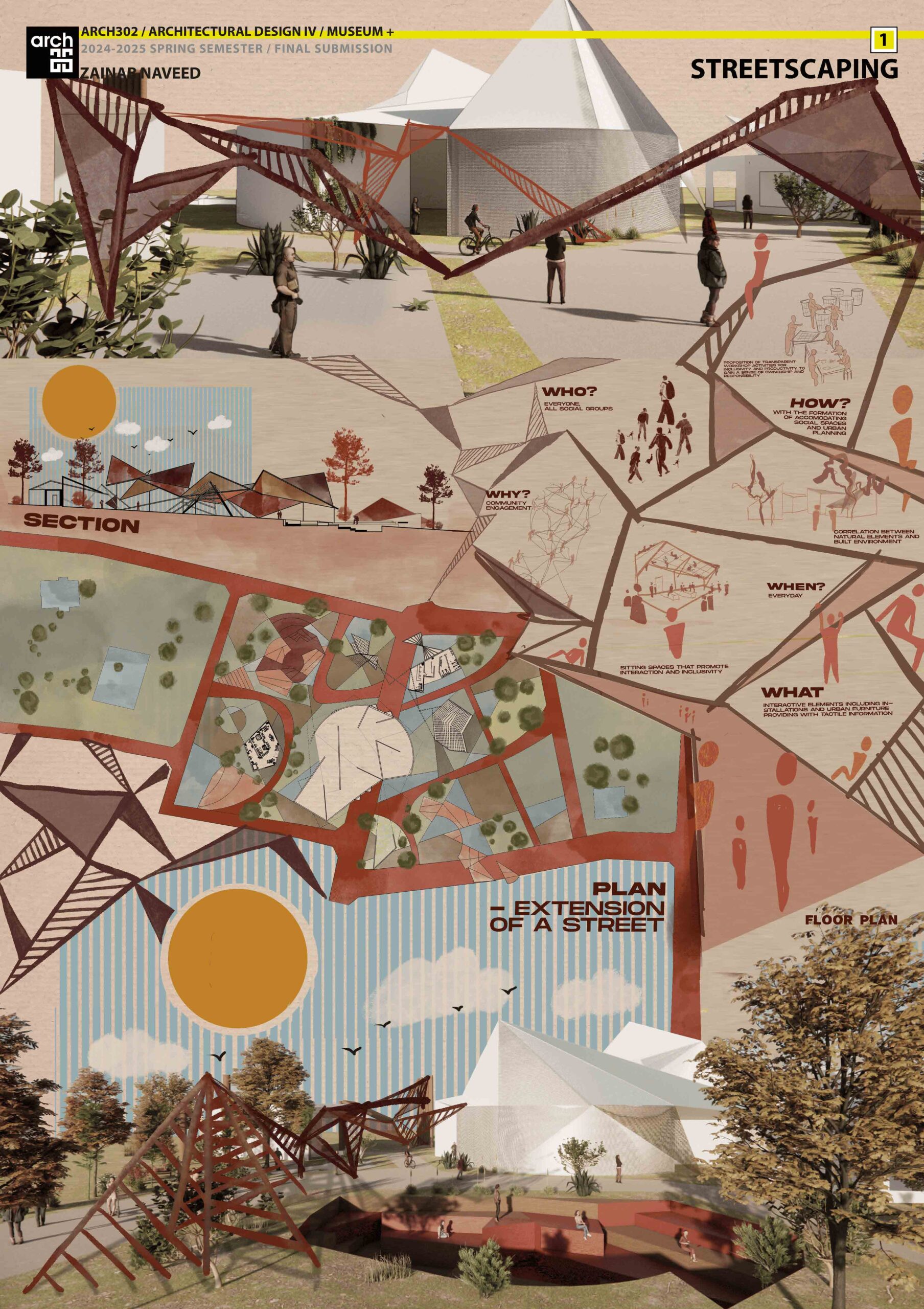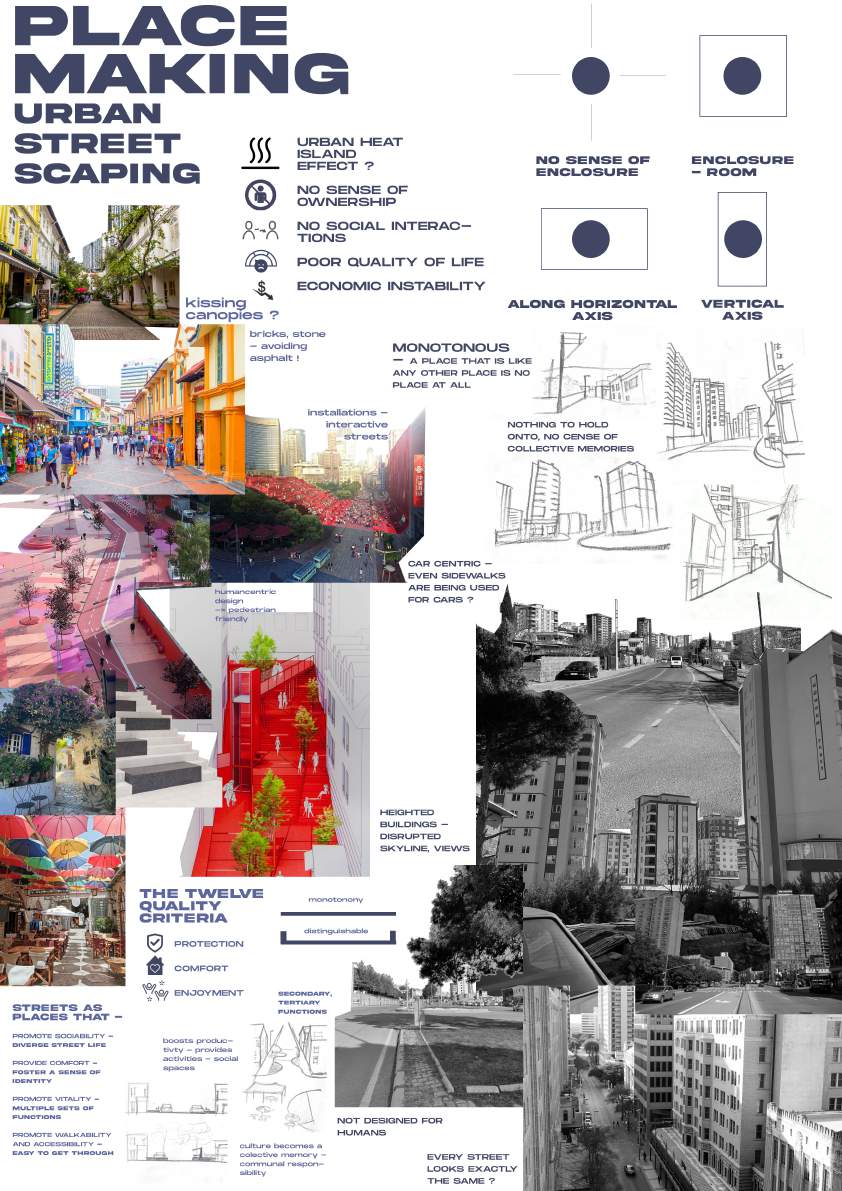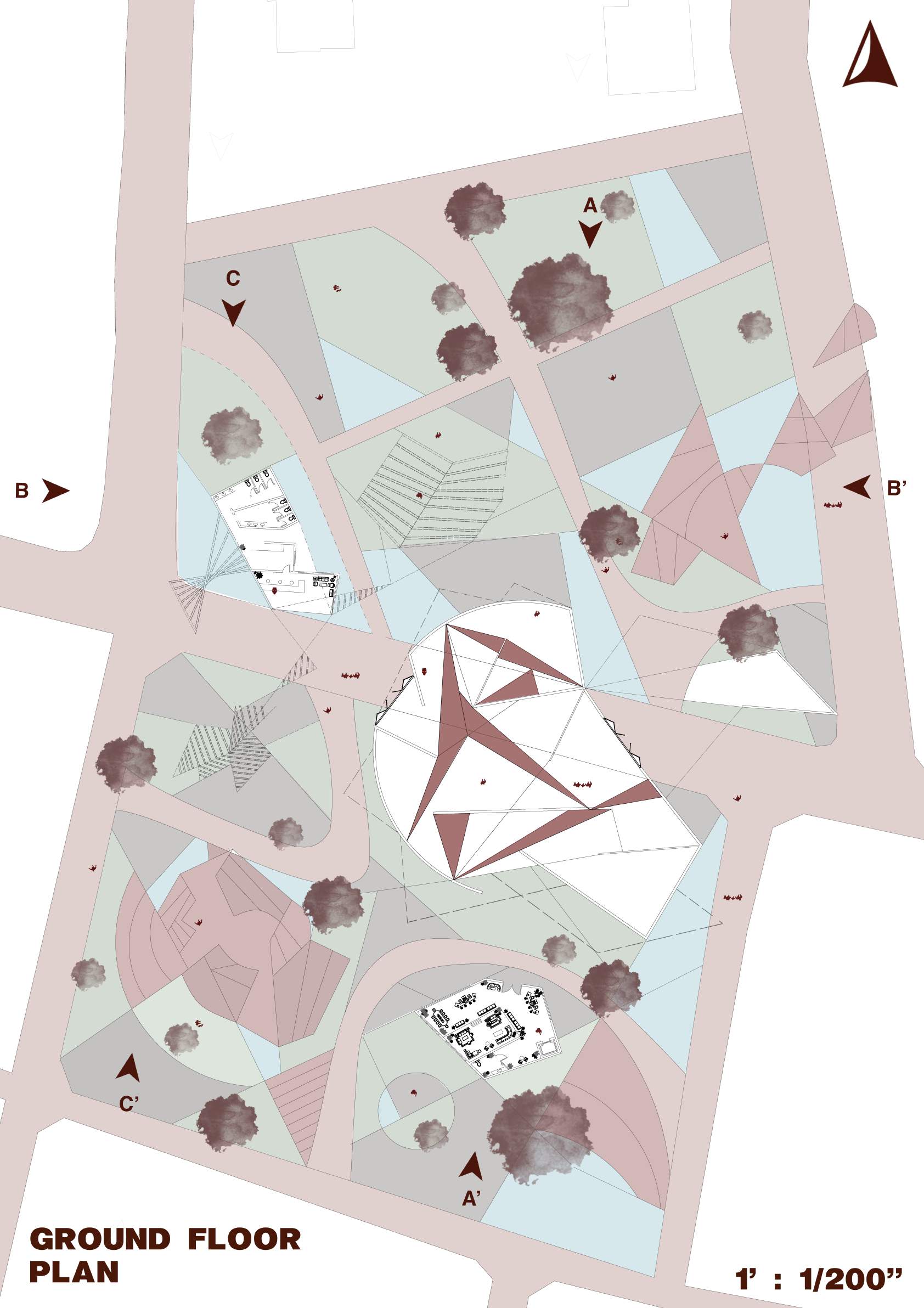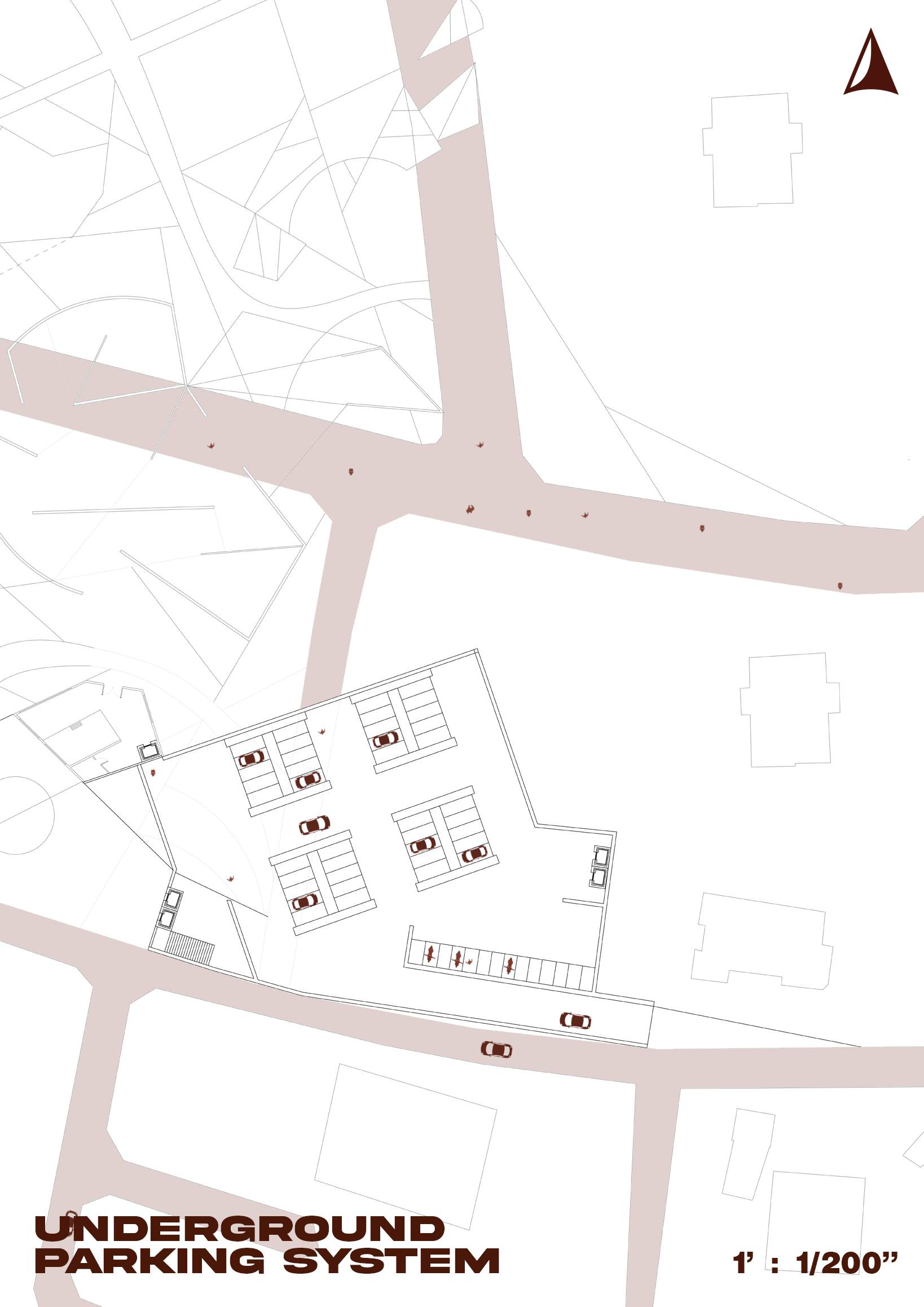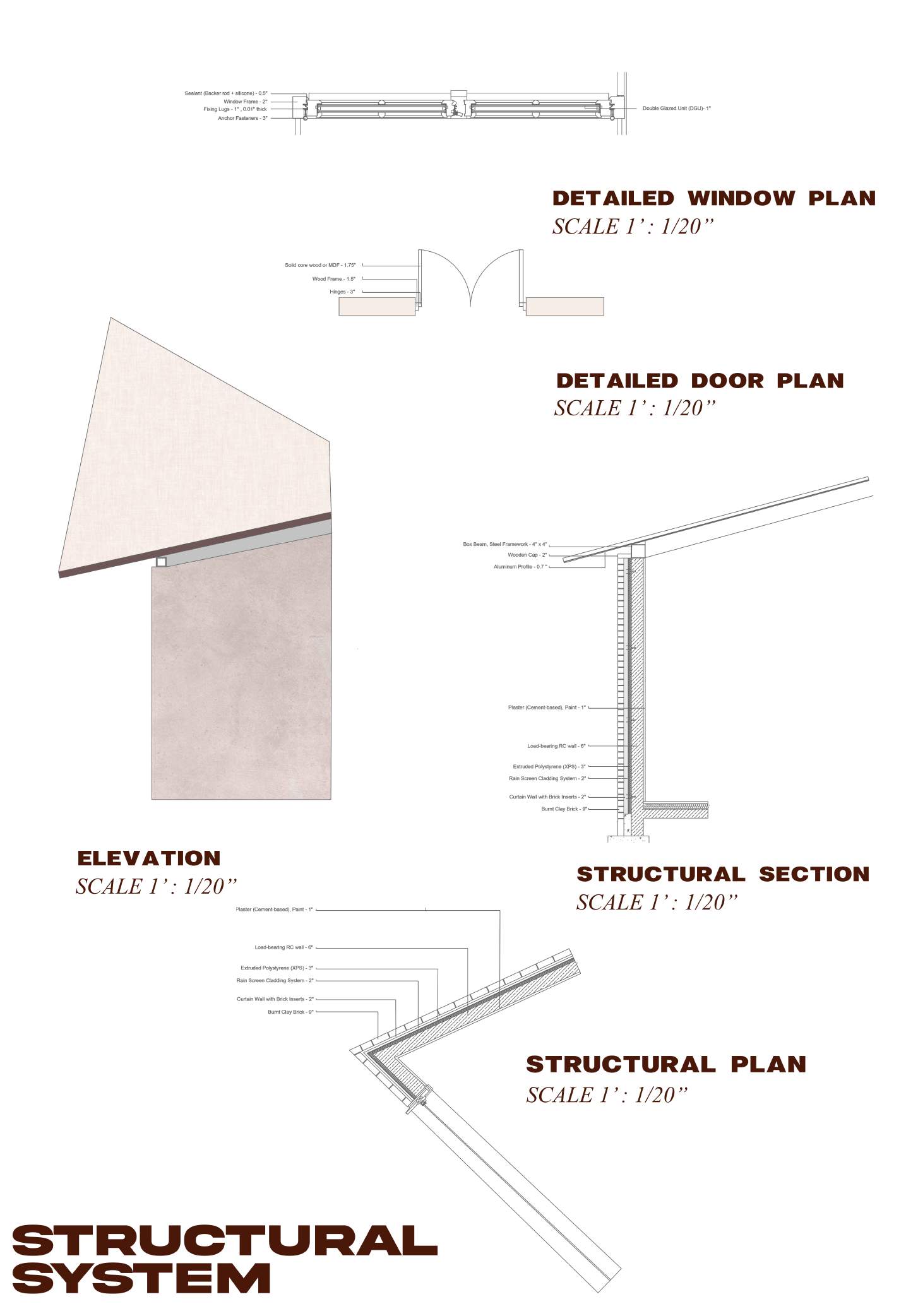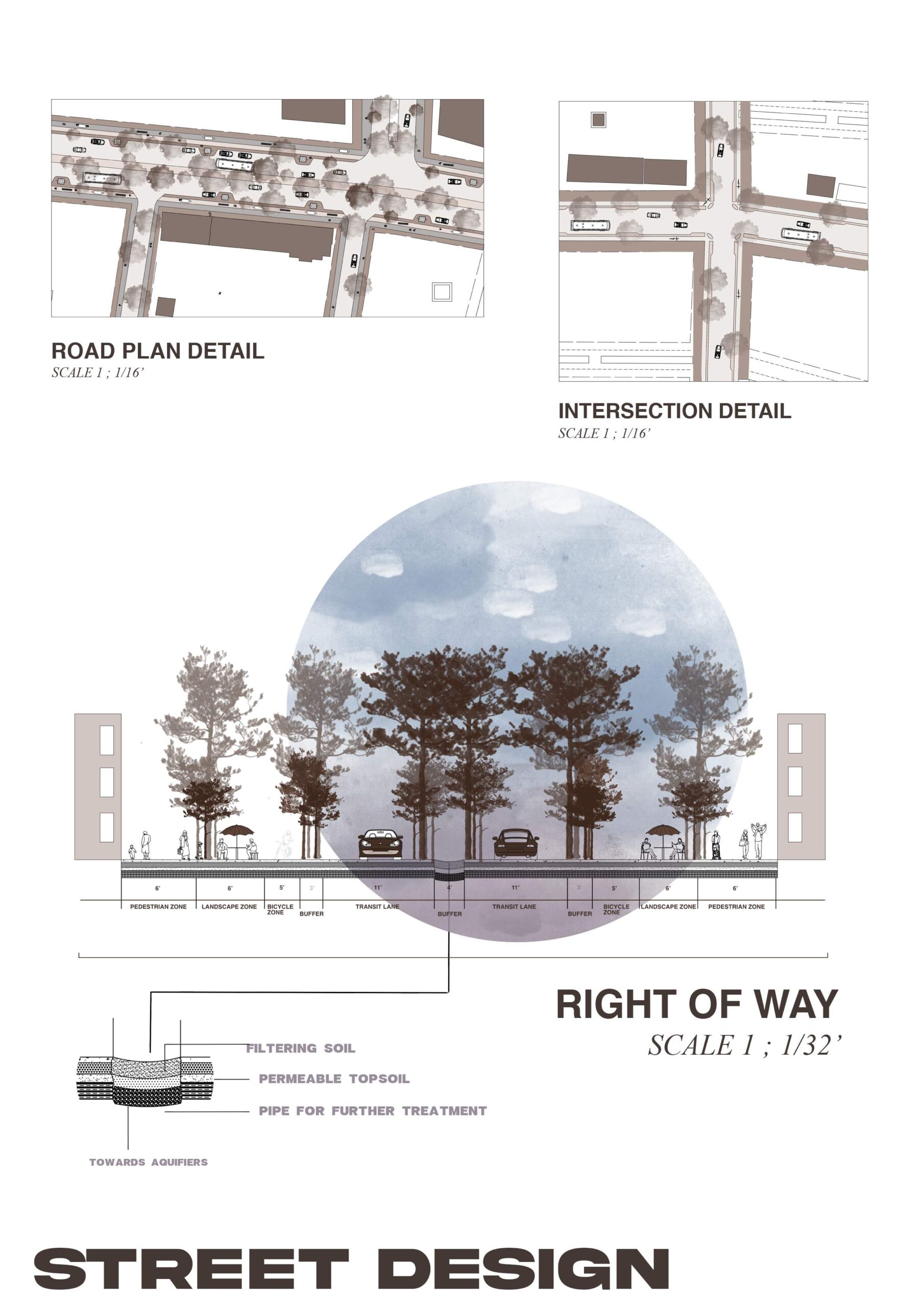STREETSCAPING / Zanıar Naveed
This project reclaims the street as a safe, human-scaled, and socially productive space, shifting its priority from vehicular movement to pedestrian experience. Guided by principles of human-centric design, the intervention employs minimal physical alterations to generate significant spatial and social impact. Urban furniture, strategic landscaping, and nuanced surface treatments are deployed not as embellishments but as critical spatial tools, quietly recalibrating the street’s logic to accommodate rest, interaction, and civic presence.
Rather than erasing existing conditions, the project works with them, amplifying latent opportunities through precise insertions that foster accessibility, safety, and community. Benches, tree canopies, tactile pavings, and shared surfaces create a layered public realm, transforming the street from a transient conduit into a place of inhabitation and exchange. The design resists spectacle in favor of intimacy, allowing the street to become a platform for everyday urban life.
The museum anchors this vision as an architectural extension of the street itself. Blurring the boundary between built form and public space, the museum integrates urban elements, furniture, greenery, and open thresholds into its spatial language. It resists monumentality, functioning instead as an accessible civic landscape that continues the street’s ethos within its walls. By treating circulation, gathering, and observation as continuous across interior and exterior realms, the museum becomes less a sealed institution and more a porous social infrastructure, an active interface for memory, movement, and collective belonging.